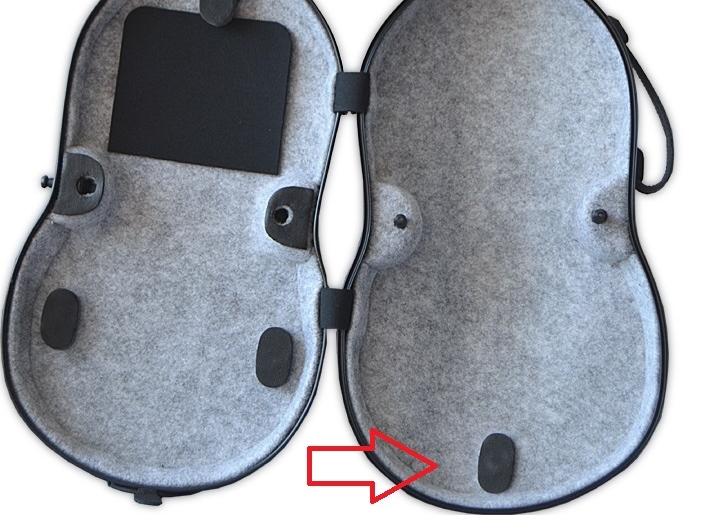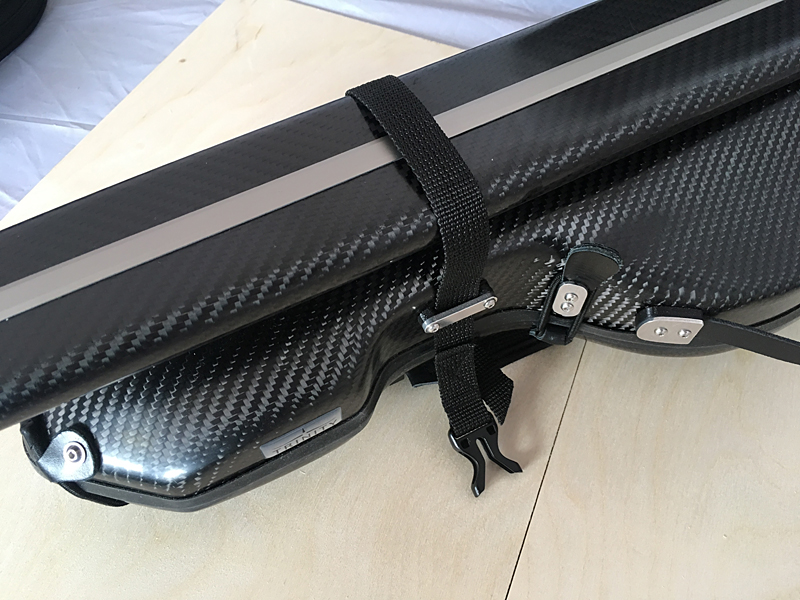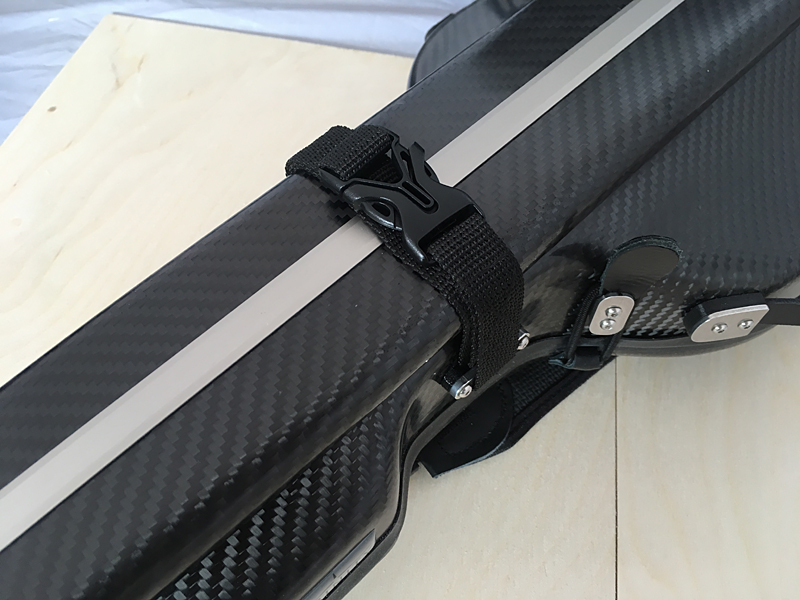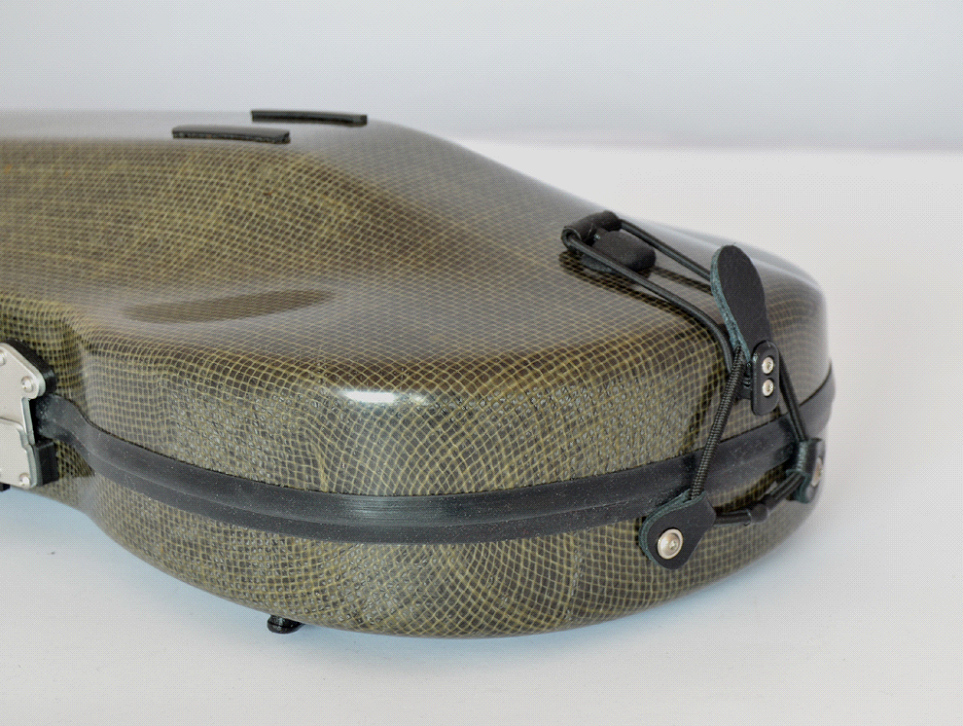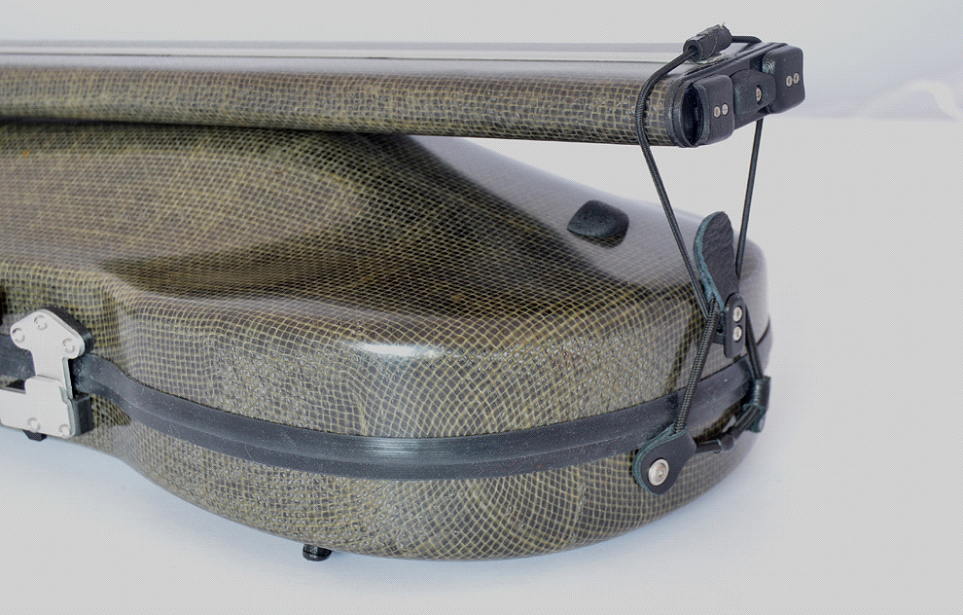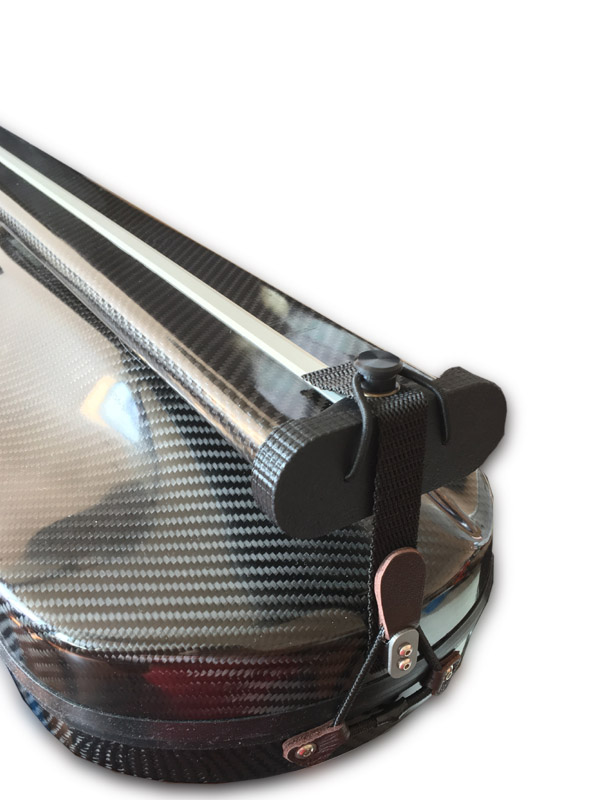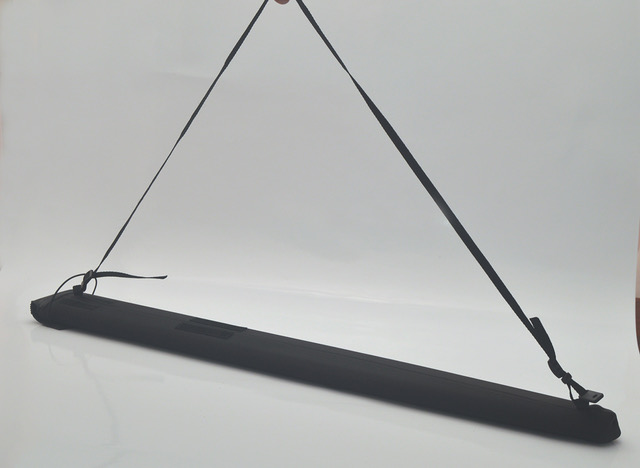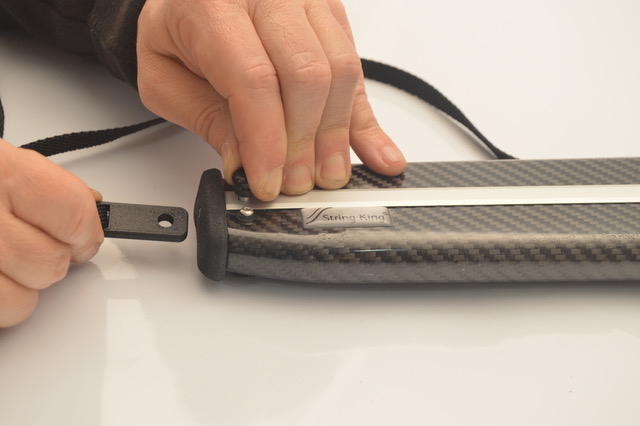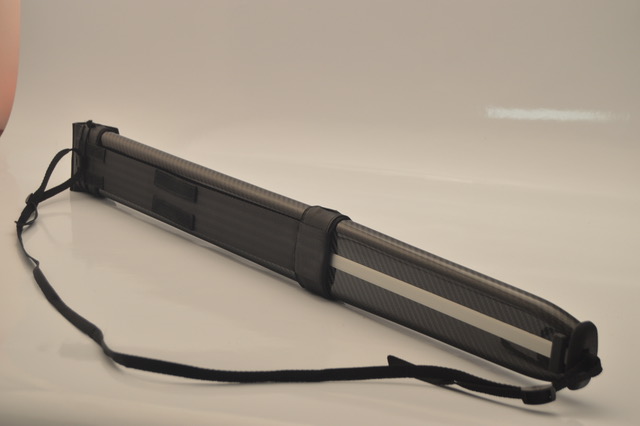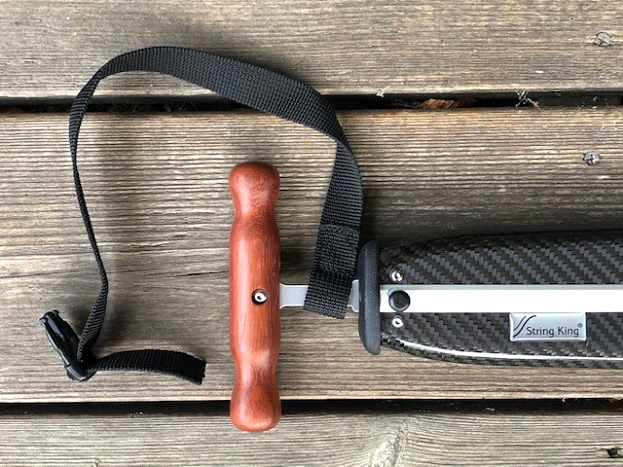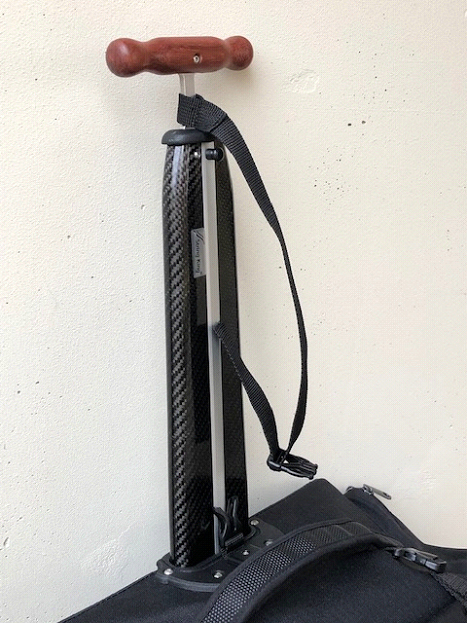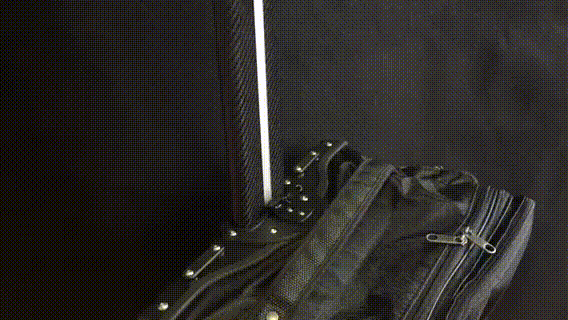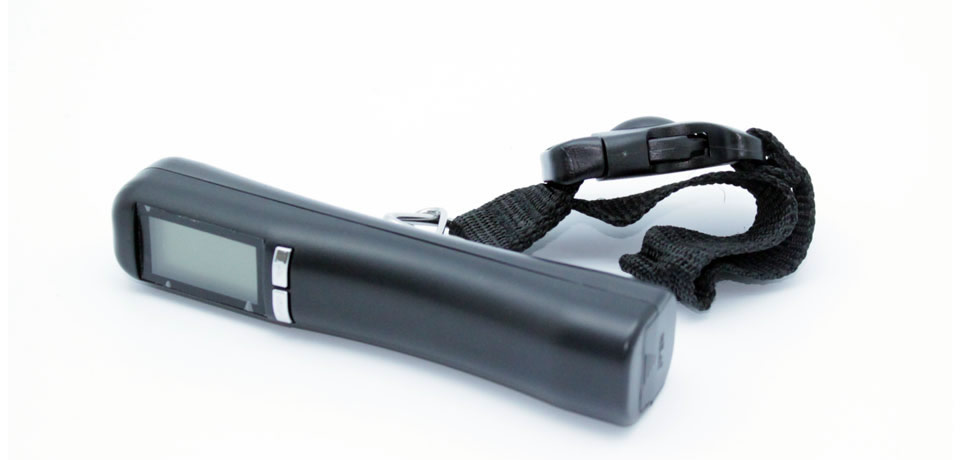
Please keep the ViolinCase closed when not in use.
2. Check that your violin is not too big for the ViolinCase.
You should hear a click after pressing top and bottom part with your fingers? After attaching all the elastic around - check if all the seals are tight.
You should hear a click after pressing top and bottom part with your fingers? After attaching all the elastic around - check if all the seals are tight.

3. A support pillow above a tail piece/chinrest should keep a violin steady in place and prevent a bridge from touching the ”celling” of a case. We add separate, self-adhesive sponge supports. You can use only one of them or you can combine them, varying the hight of this sponge support. Just remove the protective paper and press the glue side to the fabric of the lock, above the tail piece. If necessary, glue another sponge at the top of the first one (the one without leather).
BowCase to ViolinCase connection
Place the BowCase on the ViolinCase.
Connect both cases using the click strap on the neck of the ViolinCase.
Fix the lower end of the BowCase by putting the T-shaped cotter pin attached to the elastic into the hole of the BowCase.
You can open the ViolinCase without removing the BowCase.
When not in use, put the cotter pin into its base on the surface on the ViolinCase.
If necessary in the future you can exchange the elastic, keeping the cotter pin.
Connect both cases using the click strap on the neck of the ViolinCase.
Fix the lower end of the BowCase by putting the T-shaped cotter pin attached to the elastic into the hole of the BowCase.
You can open the ViolinCase without removing the BowCase.
When not in use, put the cotter pin into its base on the surface on the ViolinCase.
If necessary in the future you can exchange the elastic, keeping the cotter pin.
Pull the click strap through. Adjust the length and connect both click ends.
Place the elastic at the end of the neoprene cover under the hook of the ViolinCase.
Place the elastic securing the ViolinCase above the hook (Note: attach both elastics in that order!).
You can open the ViolinCase without removing the BowCase.
If necessary in the future you can exchange the elastic yourself.
Place the elastic securing the ViolinCase above the hook (Note: attach both elastics in that order!).
You can open the ViolinCase without removing the BowCase.
If necessary in the future you can exchange the elastic yourself.
Kensington ClickSafe Combination Lock (optional accessory) and all the Trinity Cases. It prevents an unauthorized opening of the Violin Case and the BowCase and secures all 3 cases by fixing it to a firm object. Just click the lock cylinder onto the cotter-pin installed in the ViolinCase and it’s locked. A 4-wheel number sequence can be set to an easily remembered code so you can put it to work quickly. It’s also resettable to any of 10,000 possible combinations. Of course you don’t need to use it; the case will still be securely closed.
Big Accessory Pocket on the BowCase
You can store it in one of the pockets. Attach the straps to the loops on the top of the hard back and to the wheels (protecting your clothes from dirt at the same time).
Without removing the ViolinCase and the BowCase you can cary the suitcase on your back; perfect when you travel with another big luggage, or there’s a lot of snow around.
Without removing the ViolinCase and the BowCase you can cary the suitcase on your back; perfect when you travel with another big luggage, or there’s a lot of snow around.
The Backpack Straps for the SuitCase (optional accessory)
Carrying the BowCase on its own, using the light shoulder strap (included).

